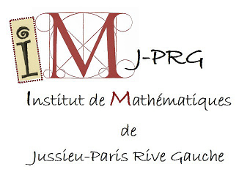| Résume | The Mordell-Lang conjecture (now a theorem, proved by Faltings, Vojta,
McQuillan,...) asserts that if G is a semiabelian variety G defined
over an algebraically closed field of characteristic zero, X is a
subvariety of G, and Γ is a finite rank subgroup of G, then
X ∩ Γ is a finite union of cosets of Γ. In positive
characteristic, the naive translation of this theorem does not hold,
however Hrushovski, using model theoretic techniques, showed that in
some sense all counterexamples arise from semiabelian varieties
defined over finite fields (the isotrivial case). This was later
refined by Moosa and Scanlon, who showed in the isotrivial case that
the intersection of a subvariety of a semiabelian variety G with a
finitely generated subgroup Γ of G that is invariant under the
Frobenius endomorphism F: G → G is a finite union of sets of the
form S+A, where A is a subgroup of Γ and S is a sum of orbits
under the map F. We show how how one can use finite-state automata
to give a concrete description of these intersections Γ ∩ X
in the isotrivial setting, by constructing a finite machine that
identifies all points in the intersection. In particular, this
allows us to give decision procedures for answering questions such
as: is X ∩ Γ empty? finite? does it contain a coset of an
infinite subgroup? In addition, we are able to read off coarse
asymptotic estimates for the number of points of height ≤ H in the
intersection from the machine. This is joint work with Dragos
Ghioca and Rahim Moosa. |

